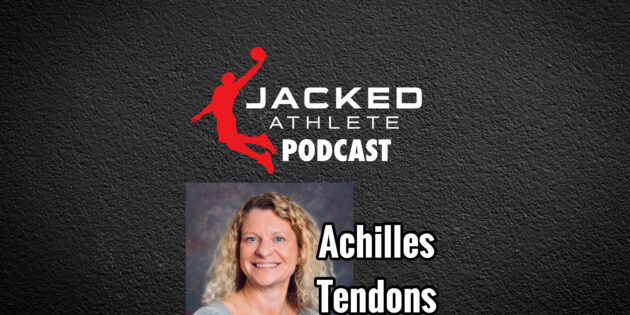https://podcasts.apple.com/us/podcast/jacked-athlete-podcast/id1462537296?i=1000649224209
Tendon: “it’s a very mechano-sensitive tissue.”
“The tendon doesn’t do well with biopsies… you really don’t want to start poking and cutting things out of the tendon in general.”
“Sometimes maybe you need to cause a chaos [in a ‘stuck’ tendon].”
“There are subgroup of people with Achilles/patellar tendinopathy, but if you’re not thinking about the subgroups and just throw them all in, you’re gonna have some studies that show an effect and some that don’t.”
“The soleus is the smallest subtendon but the biggest muscle.”
Post-rupture: “Distally, the soleus really gets retracted… how much the soleus is affected might be one of the reasons we see difficulties with some more than others.”
Tendon pain: “You cannot judge what you’re gonna do by how you feel while you’re doing it… especially if you’re on a basketball court with your friends and you’re gonna beat them.”
“If you’re not doing anything else but you’re rehab, all your other tissues are getting lazy… I want to keep you as active as I can while we’re trying to control the load for that tendon.”
“The big key is to get enough loading in there… a bucket: either you do it three times a week really heavy or you fill it daily.”
“You need to evaluate all these domains and then you need to work on the ones where they have deficits.”
Basketball analogy: “A healthy tendon is a basketball with good air, it doesn’t take a lot to bounce it up and down… if you take out a little air (tendinopathy), you can bounce it high but you work a lot harder to do the same thing.”
“Elite athletes, when they come to me (with Achilles tendinopathy), they can describe months earlier they were running slightly slower, jumping slightly lower, they were not performing quite as well.”
“For tendon pain, you should listen to the very subtle changes… the slight stiffness, etc. … if you listen to those early on, we can probably reverse what’s going on fairly easily.”
“There are five domains related to Achilles tendinopaty and they are unrelated.” (Structure, function, personal factors, symptoms, and psychological factors)
It’s not always loading: “High blood sugar or high cholesterol, those are changing the tendon as well.”
“The tendon probably needs two or three days to recover from hard things… it doesn’t mean that you need to do nothing those days, now maybe you need to load it differently or with different levels.”
The four Achilles subgroups
Activity dominant: Younger, more runner, jumpers. Not a lot of functional deficits, structural changes. They’re probably just overloading.
Function dominant: A little bit older, very active, functional deficits. Older runner, they need to be stronger.
Psychosocial dominant: More females, higher fear of movement, more deficits in function because you’re fearful of loading.
Structure dominant: Older, obese men. Not really physically active. Their tendon looked horrendous. Maybe this is more of a metabolic problem. Are these changes in structure related less to overload but maybe more to systemic problems.
“All of them did really well with exercise.”
Twitter: https://twitter.com/kgSilbernagel
Tendon Research Group Twitter: https://twitter.com/UDtendongroup
Tendon Research Group Instagram: https://www.instagram.com/udtendongroup/



